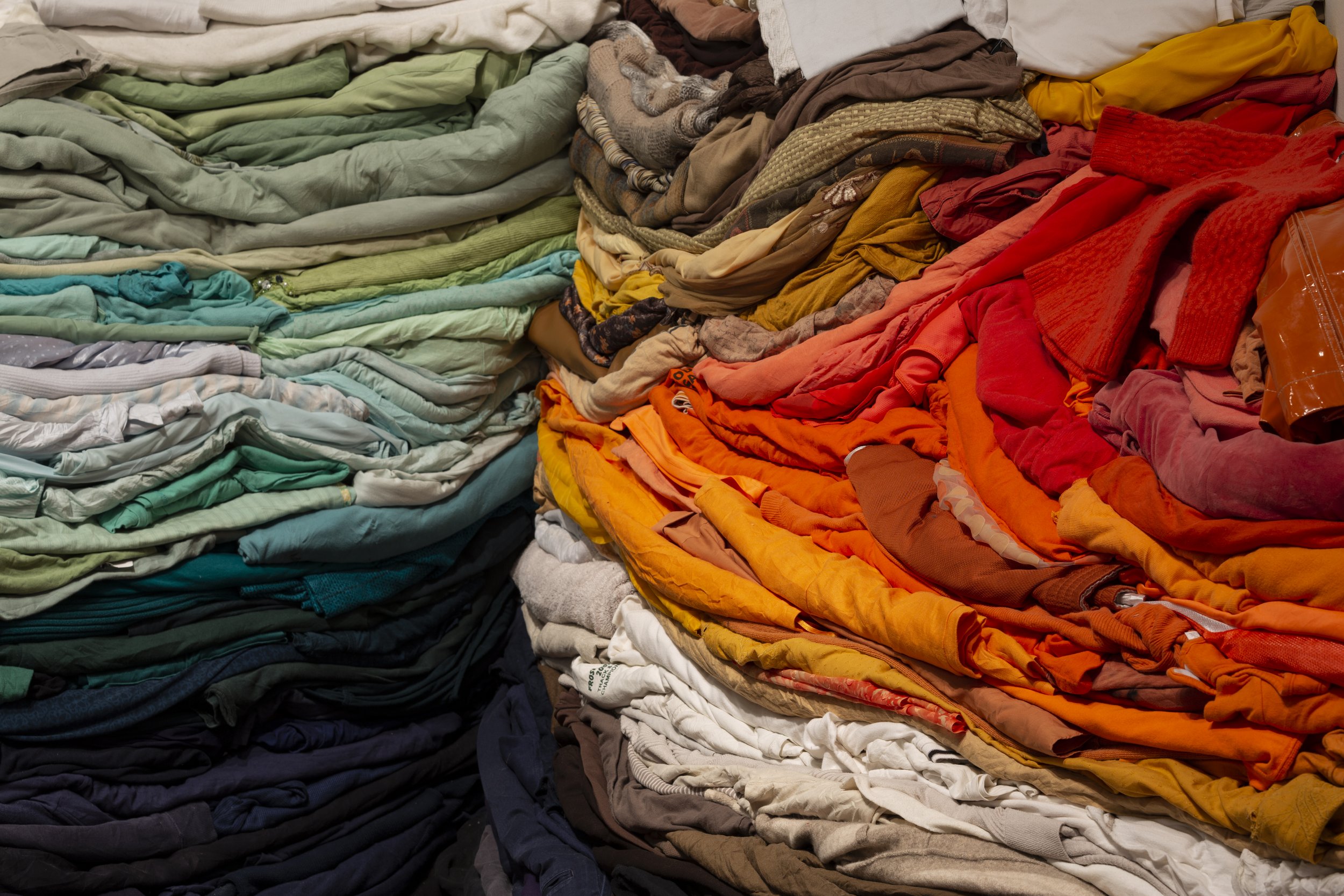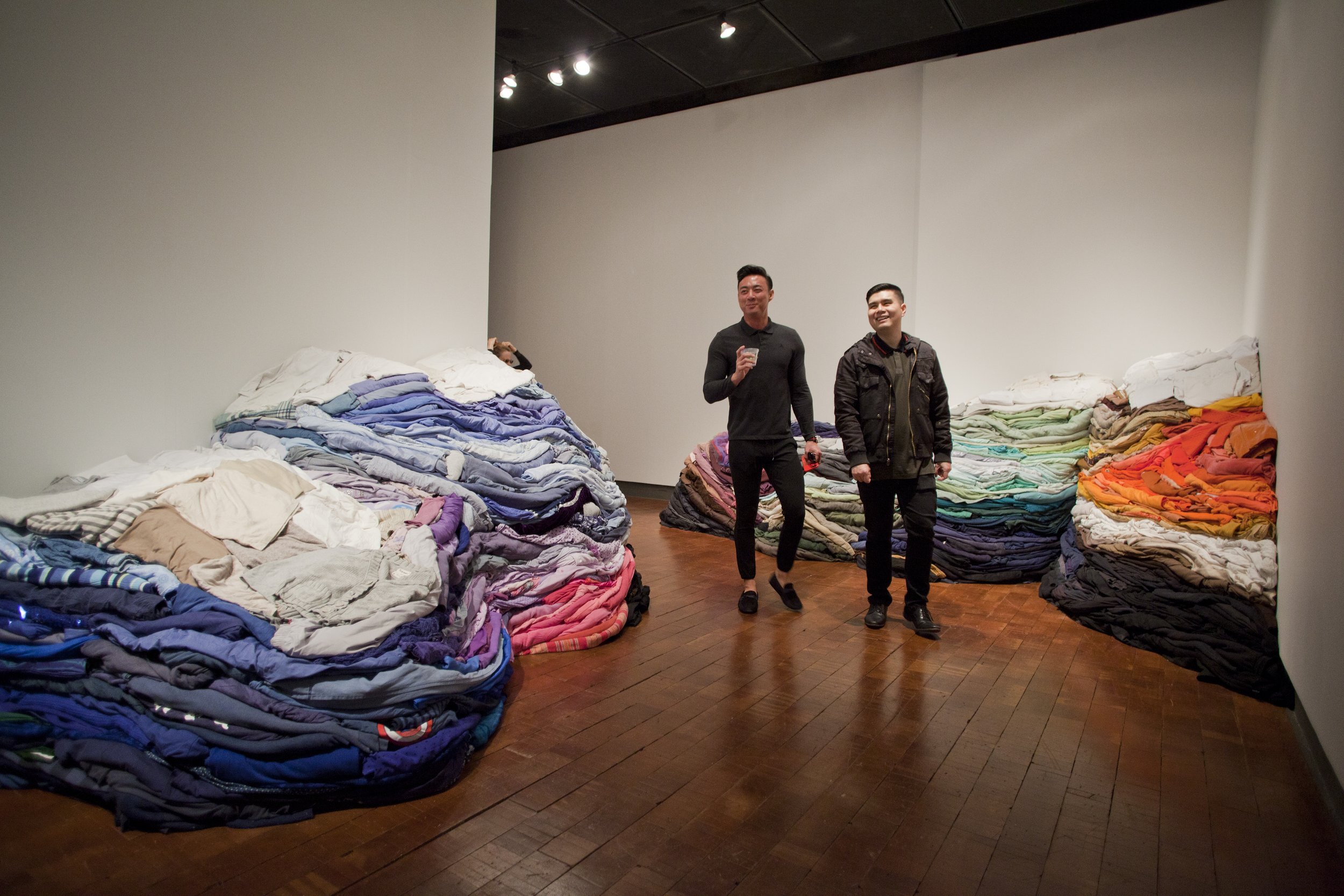
Begovich Gallery
Reclaimed Landscapes: The Art of Jarod Charzewski
Exhibition Partners
I curated and designed Reclaimed Landscapes: The Art of Jarod Charzewski, a timely midcareer retrospective that is a site-specific installation exploring America’s current relationship with consumerism, the fast-fashion industry, and our deeply rooted habits of purchasing disposable and cheap goods.
For decades Americans’ dependence on manufactured goods has produced multibillion-dollar industries that form the basis of capitalism and corporate culture. While the United States has less than 5 percent of the global population, it accounts for 60 percent of the private consumption spending worldwide[1] and generates 258 million tons of waste per year, with only about 35 percent of the waste being recycled.[2] Reclaimed Landscapes: The Art of Jarod Charzewski is a timely midcareer retrospective exhibition and site-specific installation exploring America’s current relationship with consumerism, the fast-fashion industry, and our deeply rooted habits of purchasing disposable and cheap goods.
As an artist and activist, Charzewski makes vivid installations that illustrate the results of our out-of-control behaviors toward purchasing. The exhibition is part of an ongoing conversation surrounding consumer culture, reminding individuals to reconsider their habitual actions and adopt alternatives that will lead to a sustainable future. The exhibition included 6,000 pounds of unsellable and unusable textiles donated from Goodwill, 4,000 pounds of unsellable and unusable wires from Goodwill, and 500 pounds of bike tire rubber to complete Charzewski’s site-specific installation.
Reclaimed Landscapes explores the edge between sustainable and disposable fashion through the work of South Carolina-based installation artist, Jarod Charzewski. His work centers on America’s consumerism in fashion and how mass-produced clothing is purchased and then disposed of at alarming rates. Charzewski exposes consumer culture by utilizing donated clothing from Goodwill, which is meticulously folded and methodically stacked into undulating piles mimicking landmasses or sedimentary rock layers, wires that he utilized to create a mountain shape, and bike tires that he sculpted into a tidal wave. All of these installations are meant to allude to natural phenomena in nature, as well as produce reverence in the viewers as these sculptures tower over visitors and conjure consciousness regarding the amount of unusable and unsellable goods within our daily lives. History is revealed within the monumental landscapes, creating a sobering legacy of disposable objects, illustrating our compulsive relationship with consumerism.
Images © D. Hill, © Eric Stoner, and © Michael Quinn






























